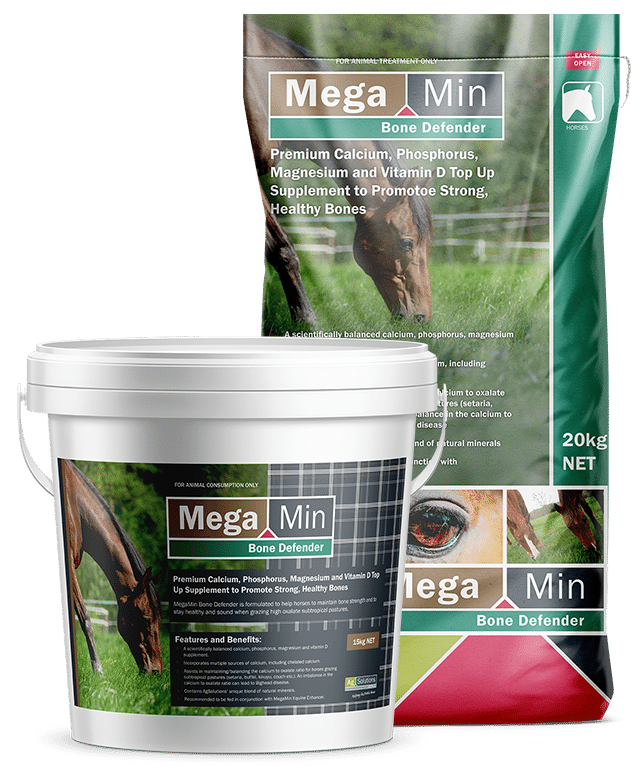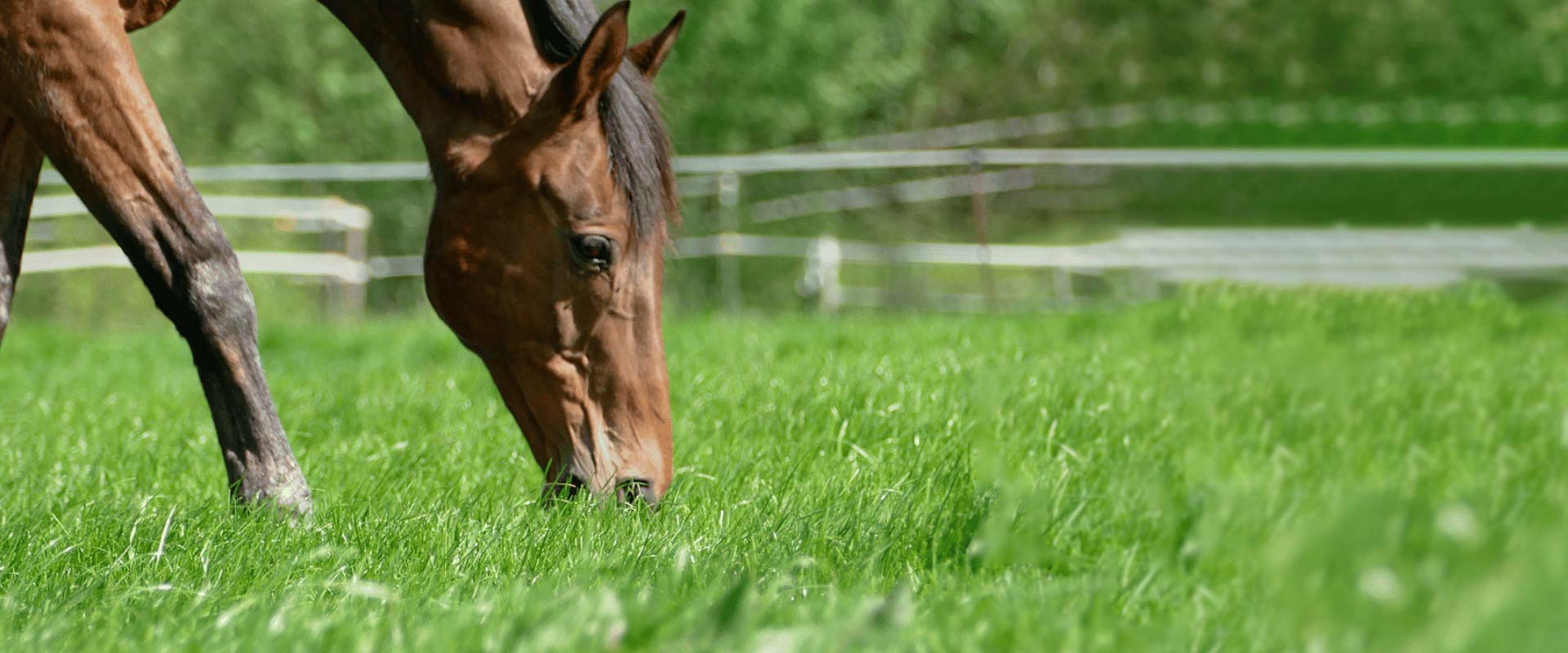Premium Calcium, Phosphorus, Magnesium and Vitamin D Top-Up Supplement to Promote Strong Healthy Bones
Formulated with broad spectrum macro and trace minerals plus additional calcium, magnesium and phosphorus, MegaMin Bone Defender helps horses maintain bone strength and stay healthy and sound while grazing high-oxalate subtropical pastures. Left unsupplemented on such pastures, horses are at risk of developing severe bone demineralisation or bighead disease.
Feeding Guide
The below feeding rates are for horses on pasture who are not receiving any significant amounts (less than 1 kg/day) of supplementary hay or hard feed.
MegaMin Bone Defender should be fed with the recommended dose of MegaMin Equine Enhancer or as part of a balanced diet.
Typical Pastures
| Average Body Weight | |||
| 400kg | 500kg | 600kg | |
| Weanlings, Yearlings and 2YOs | 140 | 180 | 220 |
| Moderate Work | 160 | 200 | 240 |
| Heavy Work | 180 | 220 | 260 |
| Pregnant Mares | 140 | 180 | 220 |
| Lactating Mares | 190 | 230 | 270 |
| Aged Horses | 140 | 180 | 220 |
Grazing Setaria
If your Setaria is the Kazungula variety please contact us for advice and dosage rates.
| Average Body Weight | |||
| 400kg | 500kg | 600kg | |
| Weanlings, Yearlings and 2YOs | 420 | 540 | 660 |
| Moderate Work | 480 | 600 | 720 |
| Heavy Work | 540 | 660 | 780 |
| Pregnant Mares | 420 | 540 | 660 |
| Lactating Mares | 570 | 690 | 810 |
| Aged Horses | 420 | 540 | 660 |
Feed Reduction Guide
For horses given supplementary hay or hard feed, reduce MegaMin Bone Defender by the following amounts.
| Amounts to reduce MegaMin Bone Defender by | |
| For every 1kg of Lucerne Hay | 70g/day |
| For every 1kg of Grass Hay (Low Oxalate) | 25g/day |
| For every 1kg of Complete Feed* | 50g/day |
*Fortified with 8.5g/kg of calcium at minimum.
1x heaped scoop (in bucket) = approx 100g of MegaMin Bone Defender.
Directions: Mix well into feed and dampen. Ensure an adequate supply of fresh, clean drinking water and free choice plain salt are available at all times. Slowly introduce into horseís diet over 7-10 days.
Dosage/Administration: 1 heaped scoop (in bucket) = approx 100g of MegaMin Bone Defender

Available In
Features and Benefits
Customer Testimonials
Pasture Management for Horses
Greater emphasis on pasture feeding of horses should be made in Australia, as it offers the advantage of considerable reduction in feeding costs in combination with a return to the natural grazing conditions to which horses are well adapted. Grazing horses attain benefits from both the nutritional value of the pasture and from the exercise derived from actively grazing.
Equine Nutrition Blogs
Whether you’re new to the equine world or an experienced equestrian, there is always something new to learn about how to feed and care for your horses. Equine nutrition blogs can be an excellent resource for staying up-to-date on the latest research, trends, and best practices in equine nutrition.
In this area, we explore some of the most popular equine nutrition topics, delve into some of the essential principles of equine nutrition and provide tips for creating a balanced and healthy diet for your horses.
Equine Nutrition & Training Centre
Designed for equine enthusiasts, such as yourself, our Equine Nutrition and Training Centre connects you with leading experts in the field, offering practical and insightful information you never knew you needed – until now.
As a member of our equine community, you’ll gain access to our comprehensive collection of equine nutrition presentations, videos, workshops, clinics, special events, and exclusive offers!


What is Bighead?
Nutritional Secondary Hyperparathyroidism (NSH) is most commonly known as “Bighead” and develops as a result of a calcium imbalance within the horse’s diet. During periods of calcium shortage, horses will mobilise calcium and phosphorus from their bones to keep blood calcium levels normal.
When this state of calcium deficiency occurs for a period of time, horses will mobilise so much calcium and phosphorus that their bones become fibrous and weak. It is essential that a horse’s diet is balanced and the calcium to phosphorus ratio must be kept above one part calcium to one part phosphorus.
What are some signs of Bighead?
– Shifting lameness, sore bones and joints
– Ligament and tendon injuries
– Noisy breathing and nasal discharge
– Ill-thrift and harsh coat
– Enlarged/swollen facial bones (ridge over nasal bone)
– Early tiring and a low tolerance for work
– Loose and shifting teeth and difficulty chewing


